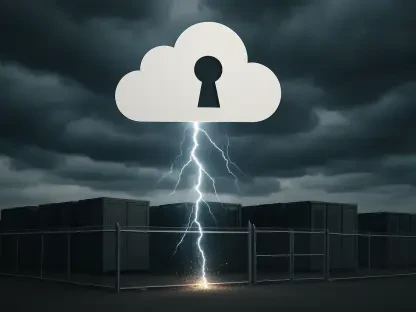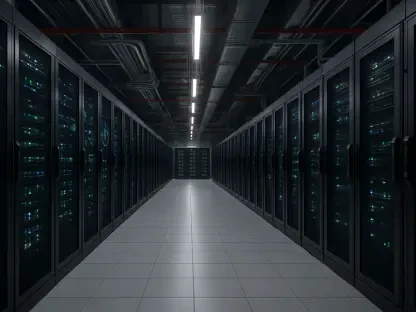In an era where space has become a critical frontier for national security and scientific exploration, the United States Space Force faces a pressing challenge with its Satellite Control Network (SCN), the backbone for managing a vast array of military and government satellites. This aging infrastructure, composed of just 19 parabolic dish antennas spread across seven global sites, is increasingly unable to meet the demands of a growing satellite constellation. Each antenna can communicate with only one satellite at a time, creating a bottleneck as the number of orbital assets operated by the US military, NASA, NOAA, and the National Reconnaissance Office continues to expand. The urgency to modernize and expand capacity has led the Space Force, through its Space Systems Command (SSC) and System Delta 85, to pursue innovative partnerships and strategies. These efforts aim to ensure robust satellite tracking, telemetry, and command operations in an increasingly crowded orbital environment.
Tackling Immediate Shortfalls through Collaboration
The first step in addressing the SCN’s capacity crisis involves a strategic alliance with the National Oceanic and Atmospheric Administration (NOAA) under the Federal Augmentation Service (FAS) program. Established through a memorandum of understanding in 2023, this initiative allows the Space Force to utilize NOAA’s excess antenna capacity to supplement its overstretched network. Colonel Patrick Little, program director at SSC’s System Delta 85, highlighted at a recent industry conference that this partnership is on the verge of becoming operational, with implementation expected within a few months. Although initial stages have encountered operational challenges, the collaboration serves as a critical prototype. It provides immediate relief by expanding the network’s reach for essential satellite functions while offering invaluable insights into managing inter-agency cooperation. This short-term solution underscores the Space Force’s commitment to finding quick, effective ways to bolster its infrastructure amid rising demands.
Equally important is the learning curve this partnership represents for future endeavors. By tapping into NOAA’s resources, the Space Force is not only addressing urgent capacity needs but also refining the processes required for seamless integration of external systems. The lessons learned from navigating technical and logistical hurdles during this rollout are expected to inform broader strategies for expanding the SCN’s capabilities. This initiative highlights a pragmatic approach, focusing on leveraging existing federal assets to bridge gaps without the delays and costs associated with building new infrastructure from scratch. Furthermore, it sets a precedent for how governmental entities can collaborate to solve complex challenges in space operations, paving the way for more robust networks that can handle the increasing complexity of satellite missions across multiple agencies.
Building a Scalable Future with Innovative Programs
Looking toward a sustainable long-term solution, the Space Force has launched the Joint Antenna Marketplace (JAM) program, an ambitious effort to revolutionize satellite control infrastructure. Initiated by SSC earlier this year, JAM seeks to create a dynamic ecosystem where satellite control centers can access antenna time and bandwidth from a diverse pool of third-party providers, including commercial giants like Amazon Web Services and Kongsberg Satellite Services. Two companies, Boecore (a subsidiary of Auria) and Sphinx Defense, have been awarded contracts to develop cloud-based platforms that function as brokers, matching user needs with available resources. This marketplace model prioritizes flexibility, enabling the Space Force to scale capacity up or down based on operational requirements, whether for routine missions or high-stakes scenarios like combat or emergencies.
Beyond its innovative structure, the JAM program reflects a shift in mindset, moving away from reliance on government-built hardware toward a more agile, partnership-driven framework. This approach is designed to keep pace with the rapid proliferation of satellites by integrating external ground systems into the Space Force’s architecture. The emphasis on scalability ensures that the network can adapt to future growth without the prohibitive costs and timelines associated with constructing additional SCN antennas. Moreover, by fostering collaboration with commercial entities, the program taps into cutting-edge technology and expertise, enhancing the overall resilience and efficiency of satellite control operations. This forward-thinking strategy positions the Space Force to manage an ever-expanding orbital presence with greater confidence and capability.
Adopting a Hybrid Approach to Infrastructure Challenges
A defining trend in the Space Force’s modernization efforts is the adoption of a hybrid model for satellite control infrastructure, blending government-owned assets with commercial and inter-agency resources. Colonel Little has emphasized that building new SCN antennas is neither cost-effective nor timely given the accelerated rate of satellite launches. Instead, leveraging partnerships with entities like NASA, the NRO, and private sector providers offers a more viable path forward. Substantial funding—$81.5 million allocated for the current fiscal year and $93.8 million for the next—demonstrates strong governmental backing for this direction. This hybrid strategy ensures the network can dynamically adjust to fluctuating demands, particularly during critical operations where rapid response and expanded capacity are essential.
This pivot to a hybrid model also reflects broader shifts in military and governmental operations, where collaboration with commercial partners is increasingly seen as a way to enhance capabilities while controlling expenditures. By integrating external resources, the Space Force can access advanced technologies and infrastructure without bearing the full burden of development costs. This approach not only addresses immediate capacity constraints but also builds a foundation for long-term sustainability in space operations. The focus on partnerships highlights a recognition that no single entity can tackle the complexities of modern space management alone, necessitating a collaborative framework that draws on diverse strengths. As a result, the Space Force is better equipped to maintain dominance in an increasingly competitive and congested orbital domain.
Ensuring Security in an Expanded Network
As the Space Force broadens its network through external partnerships, maintaining cybersecurity emerges as a paramount concern. SSC is tasked with rigorously vetting all providers participating in the JAM pool to ensure they meet stringent security standards. A repeatable process for granting authority to connect external systems to the Space Force’s architecture is currently under development, with prototype efforts underway to refine these protocols. Close collaboration with the security community is integral to standardizing this process, ensuring that expanded access does not introduce vulnerabilities into critical satellite communications. This cautious integration reflects a balance between the need for capacity and the imperative to protect national security interests in space.
The emphasis on cybersecurity extends beyond mere compliance, aiming to build trust in the hybrid model that underpins these modernization efforts. By establishing clear, robust security measures, the Space Force mitigates risks associated with relying on commercial and inter-agency systems for sensitive operations. This focus also addresses potential concerns about data integrity and operational continuity, which are vital for military and government satellite missions. The ongoing refinement of connection protocols demonstrates a proactive stance, anticipating challenges that could arise as the network scales. Ultimately, these efforts ensure that the benefits of expanded capacity and flexibility do not come at the expense of safeguarding critical infrastructure against cyber threats in an increasingly contested space environment.
Navigating Technical Obstacles in Network Upgrades
Modernizing the SCN also involves overcoming significant technical challenges, particularly the obsolescence of certain bandwidths used by existing antennas. Due to global spectrum reallocation, some frequencies are no longer permitted in many countries, necessitating a transition to more widely accepted standards. The JAM program initially prioritizes moving satellites to the unified S-band, a commonly used frequency, with plans to later address the specific needs of military Ka-band communications. This phased approach ensures that technical upgrades are implemented systematically, minimizing disruptions to ongoing operations while aligning the network with current international standards for satellite communication.
Additionally, these technical adaptations highlight the broader complexities of maintaining a relevant and functional satellite control network amidst rapid technological and regulatory changes. By addressing bandwidth issues in stages, the Space Force can manage resources efficiently, focusing first on solutions with the widest applicability before tackling more specialized requirements. This methodical strategy also allows for continuous evaluation and adjustment, ensuring that the network remains adaptable to future shifts in technology or policy. The commitment to resolving such technical barriers underscores a comprehensive vision for modernization, one that balances immediate operational needs with the foresight to anticipate evolving challenges in the global space landscape.
Reflecting on Strategic Milestones Achieved
Looking back, the Space Force made significant strides in addressing the limitations of its Satellite Control Network through a dual-pronged approach that balanced immediate action with visionary planning. The partnership with NOAA under the FAS program provided crucial short-term relief by accessing excess antenna capacity, easing the strain on the SCN’s outdated infrastructure. Simultaneously, the rollout of the Joint Antenna Marketplace program marked a pivotal shift toward a scalable, hybrid model, integrating commercial and governmental resources to meet future demands. These efforts, supported by robust funding and a steadfast focus on cybersecurity, demonstrated a commitment to maintaining operational integrity. Moving forward, the focus should remain on refining these initiatives, ensuring technical transitions are seamless, and expanding partnerships to sustain a resilient satellite control network capable of supporting national security and scientific objectives in an ever-evolving space domain.









